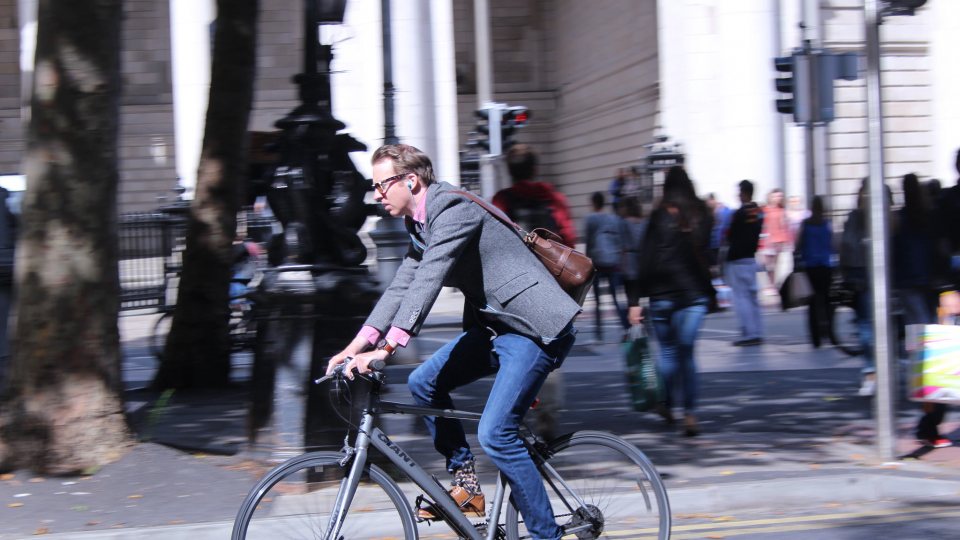Cycling with Headphones - How safe is it ?
In yesterday’s Herald a piece appeared under the headline “Cyclists face €40 spot fines for using earphones, says minister”. That sounds like some new piece of traffic law regarding people cycling ?
This offence does not exist of itself, and is not about to be introduced. It is not a specific on the spot fine to wear headphones while cycling. It is only if a Garda considers that a ‘cyclist driving a pedal cycle without reasonable consideration.’. It is totally at a Garda’s discretion.
We encourage safe cycling, as much as we also like to see safe driving. There are some cyclists of all ages that wear headphones when cycling. It’s possible to cycle safely with headphones, once the cyclist is sure they are still aware of their surroundings. In essence the eyes are more critical than the ears, and in particular the ability to turn and look behind when moving out of your regular stream of traffic, as well as being aware of what is ahead. Many cyclists wear ear muffs or woolly hats in winter, which cover the ears and muffle sounds.
“I know plenty of people who cycle with earphones on and they can still hear traffic while listening to music or drive-time radio,” says Keith Byrne, chair of the Dublin Cycling Campaign. “Someone can legally drive while talking on their phone with their headsets plugged in. You could argue this caused the same level of distraction”
Is there any evidence that cycling with headphones is dangerous ? Australian cycling magazine RideOn went looking for some with some tests that they conducted.
Based on these relatively simple tests, it is fair to conclude that:
A bike rider with ear-bud earphones playing music at a reasonable volume hears much more outside noise than a car driver, even when that driver has no music playing.
A bike rider with in-ear earphones playing music at a reasonable volume hears about the same outside noise as a car driver with no music playing, but more than a car driver playing music.
Ear-bud earphones set at a reasonable volume still allow riders to clearly hear the warning sounds of other riders.
“Cycling’s Sensory Strategies: How Cyclists Mediate their Exposure to the Urban Environment” a study by Dr. Katrina Jungnickel & Dr. Rachel Aldred also covered this issue.
Sensory strategies are critical for cyclists in a similar way to more taken-for-granted strategies (such as car radios) used by car drivers and other mobile citizens. Listening and not-listening are not simple or straightforward separate conditions but can co-exist, signaling a range of messy sensory engagements, networks of complex actors and social situations. Our research suggests that cyclists are just as consciously aware, if not more, of their sensory engagement as other transport users and engage in sensory strategies that manage their exposure to it. Just as drivers use the radio to create a safe, social and comfortable space on the road, it is possible to interpret cyclists’ sensory strategies as ways of negotiating and domesticating challenging environments. Cyclists’ sensory strategies can then be seen both as a response to landscapes shaped by the motor car, and as a response to related dominant understandings of what travel environments could and should be like.
The answer to the safety of headphone use for any activity is very much related to the volume being set to a reasonable rate. Is anyone challenging the use of car stereos or pedestrians using headphones ? Motorbike riders have all encompassing helmets and some riders even have in-helmet intercoms to enable conversation between driver and pillion passenger. How is a Garda to determine the sound intensity level from the ear phones in comparison to what a driver is listening from an in-car sound system?
Help us do more for cycling in Dublin by becoming a member!

